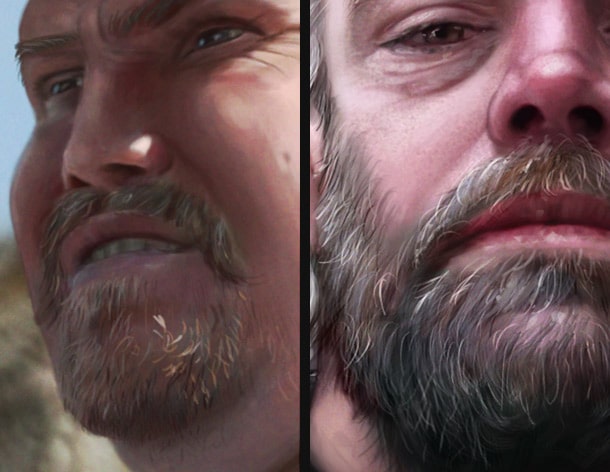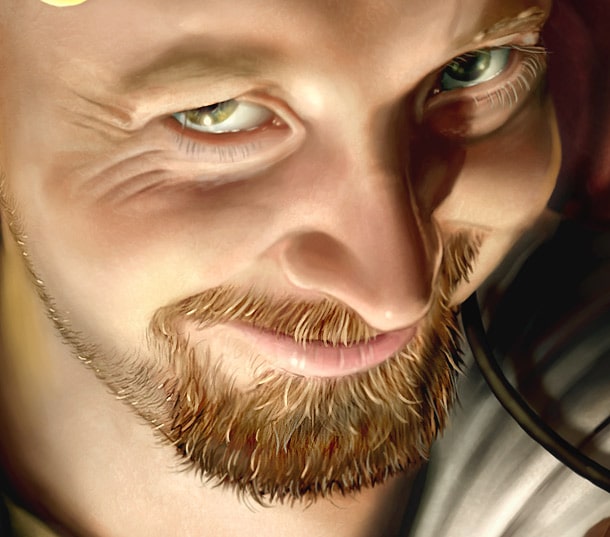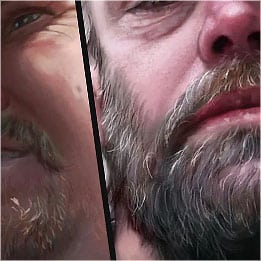Painting beard
It’s easy to make short beard or stubble look too neat, noisy, or perfect. Beard should look a bit messy, contain many colours, and consist of quite thick stubble or hairs.
Start off with a slightly darker grey colour to de-saturate and mark the area. Just as when painting hair, make sure to start off with the darker stubbles or hairs and work your way up towards the brightest details on top. Working from a dark base up to brighter layers of hair or beard makes it appear more natural and adds depth. This goes for both blonde and dark hair.
If you look at beard in real life, it may have wider range of colours than you might think, and often redder saturation and more glossy than normal hair. Use a medium sized hard edged brush, and start suggesting some stubble here and there. Remember that you shouldn’t make it perfect all over; just enough details to suggest it where it’s needed to trick the eye. Too dense and thin can make it look too artificial.
To make it pop; add some highlighted stubble or hairs. This goes especially for the area between light and shadows, as if it has been caught by light and has been illuminated.
It’s at this stage its important not to go into the trap of over-detailing, or smudging out the sharp details. Stop while is still looks fairly rough, and don’t think or plan too much. Looking at pictures of bearded people might aid you to understand which directions the hairs are growing.

(C) Fantasy Flight Games
Don’t over-detail the beard. Let the creativity go a bit crazy and mix in colour variations and varied brush stroke angles. Keep the ends of the hairs sharp.

Use a medium sized brush when painting the beard. Too thin will make it look too furry and neat, when it should be thicker and messier.


Fantastic work